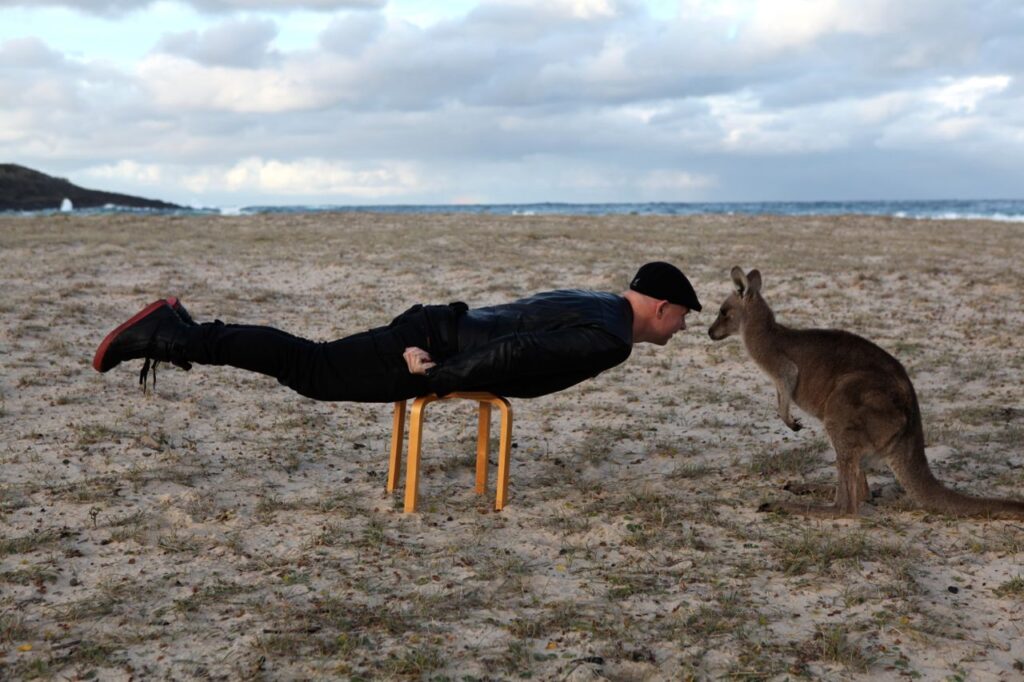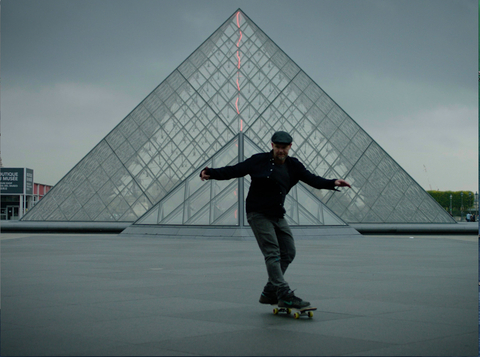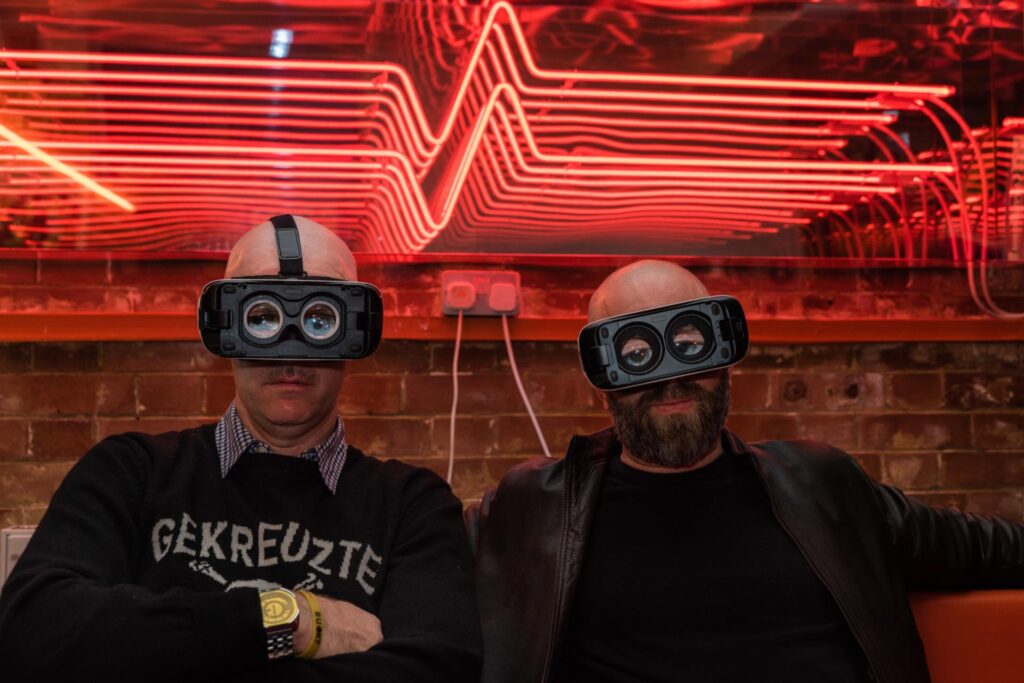Where did you grow up and where do you live now?
I grew up in a small suburb connected to Sydney called North Rocks in the west away from the coast. It was mixed, lower middle class and solid middle class in other areas. I found it exciting at times and desperately boring at times as well. I now live in London and mostly spend my time in the Southeast of London.

Where did you go to school and what did you study?
I went to a state school in North Rocks and then after graduating I went to an art school in Sydney called Sydney College of the Arts. I stayed there for a few years, got an Honors degree and then jumped to an another art school.
My Masters study was at the College of Fine Arts University of New South Wales. I studied painting although by the time I left Sydney College of the Arts, I was already experimenting with video and other technology so for my Masters degree I was mostly moving between lots of mediums.
What does your workspace / desktop / studio look like?
I’ve got a physical studio space in Southeast London that’s connected to a gallery space called the Drawing Room. It’s a medium sized space with a beautiful view of London. It’s very much a painting studio. It’s really messy, there are big unstretched canvas on the wall. There’s oil, acrylic, aerosol, it’s a real mess. I do work in VR through other studio spaces.
When did you start working creatively with technology?
A lot before officially studying video performance and installation. I was creatively using technology in my painting process. I was interested in taking reproductions of paintings and scanning them, altering their dimensions and then re-painting those manipulated images through Photoshop.
The Photoshop image of say a distorted Gainsborough or a Reynolds painting from British society portraiture going back to the 1700th or 1800th century would then become the proprietary sketch for a very detailed painting. So that’s probably when I started looking at this interface or this connection or somehow a conversation between technology and something more traditional.

In 2009-10 you were the official Australian War Artist and the first to use video for your project. Can you describe your experience working on the ground with the Australian military in Afghanistan and talk about the process of creating Double field/viewfinder (Tarin Kowt)?
This commission with the war memorial was very different for me. I was heading into a very difficult, unknown space and couldn’t control the elements around me like I do here in this studio or like I think I’m doing in this studio.
To work in an environment like that required a different kind of thinking. I wanted to explore ideas that I already had in my practice so that’s where Double field/viewfinder came from which was really me taking this technology into the theater of war but also knowing that technology was entirely integrated into that experience and supporting that experience and probably most of the technology I was using was actually developed through military objectives.
Video recording technology and digital video was so familiar to a lot of the soldiers because they are technologists. I decided to hand cameras over to them and let them record video. It ended up becoming quite intense because the soldiers took on the project as if their lives depend up on it. It almost was like a military drill so that was quite interesting for me and then letting the soldiers know that it was an experiment and getting their feedback after was equally important.

In 2016 you co-founded an Indie VR Content Collective with producer Leo Faber called Badfaith. You’ve mentioned the name of the collective is a reference to the Sartrean philosophical concept. Do you believe VR can be an antidote to certain social forces that cause people to act in bad faith? How do these ideas factor into your practice?
Firstly, the name BadFaith is connected to the concept of Jean Paul Sartre as well as Simone de Beauvoir. Each philosopher or thinker has versions or signs and symptoms of ‘bad faith’ within their thinking or within their ideas around the concept so it can be quite nuanced and complex to talk about ‘bad faith’ depending upon who I’m footnoting or referencing but I think technology can also potentially generate bad faith as well just depending upon how the technology is used. Like any technology if it’s being used as a weapon or a tool for something else.
The same technology has very different outcomes and effects and I think that the fact that bad faith was always about simulating a kind of presentation of self or position even down to the occupation of the waiter as Jean Paul Sartre’s famous example goes, then that immediately becomes relevant to technology like VR which is a very powerful simulator that we all now have access to as consumers rather than it being locked up in university research labs or tech developers so we’re going to see all kinds of different forms of bad faith in a kind of hard boiled sort of I guess bare life to use Giorgio Agamben’s term in relation to VR.

What projects are you currently working on?
Good question. I’ve got a few long term projects related to shows and a few little ones that are more like doodles. I do some sketching in video. I go out and ride my bike and follow the line on the street and it’s kinda like a video drawing. I’m really excited about doing more of those in London, really simple raw works. I still draw, still like to printmake and paint. But I love VR and AR.
I’m trying to run that full spectrum. I don’t want to lose out on the idea of working with materials and using substance and stuff and getting dirty. Like in VR sometimes I can feel like it’s just too much of a pure space which does not reference the gunk, junk and the abject reality of my body or the world.
Have you done any work in AR? Do you find VR or AR to be a more compelling medium? Why?
I’m developing an idea for a show in AR now.
The distinction between AR and VR is quite enormous. VR completely arrests your sense of sight and hearing and when you start to include kinetics and haptics then you aren’t given a frame outside of the frameless space you’ve been immersed within while AR still gives you the reference physically and optically and and conceptually to your immediate environment as it then starts to augment that space so you still have some reference to that space if it’s to be defined as AR. So I think they are so different for me given those kinds of boring different textbook definitions. Some ideas could be better wrapped up in VR and others in AR.
In a field where hardware and software can quickly become obsolete, how do you approach documentary and archival processes for your work?
Usually I’m sorta just hopelessly producing work that will very quickly be its own ruin because that sort of archival and documentary process has changed. I’m only just now bringing it all in to a central nervous system but then it would of course be better managed through you guys in terms of the digital phase which is great.
It’s amazing to start off in art school and go from prints to slides you put a in projector right through to this system that you guys are working on. I think it’s an incredible arc as to how I’ve used technology to archive my work or to document the way that it’s been shown from a slide projector to the cloud in the space of my professional life and student years.
Who are some contemporary or historical new media artists that you admire? What are some of your favorite works?
Caravaggio’s use of optics back in the day. Interesting to think of these early examples of people who have used technology. Galileo’s drawing of the moon after he developed the telescope are some of the most beautiful images I can think of from the sides of both art and science.
In terms of new media artists, I like everyone, Raqs Media Collective to Pipilotti Rist. I’m interested in why people are using technology and sometimes I’m also interested in the result but there is always some interest to me as to why people are picking up the camera and trying to make episodic TV series and calling it art or making a series of elaborate performances around their sculptures and calling that video. Probably the one artist who I really love is Stelarc the Australian guy who auments his body with technology.
